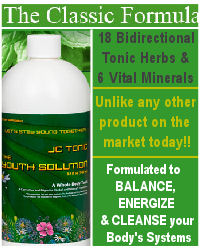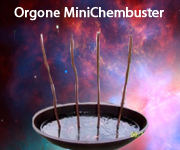What's in Vaccines
Common Ingredients in U.S. Licensed Vaccines
May 1, 2014
The vast majority of the over one billion doses of vaccines manufactured worldwide each year are given to healthy babies, children and adults. Thus, it is critical that vaccines be demonstrated to be safe and effective. FDA demands that vaccines undergo a rigorous and extensive development program in the laboratory, as well as in animal studies and human clinical trials, to determine their safety and effectiveness. Highly trained FDA scientists and clinicians carefully evaluate all of the information in a marketing application and make a determination whether to license (approve) a vaccine before it can be used in the United States. Prior to licensure, as part of FDA’s evaluation, FDA takes all of the ingredients of a vaccine into account, including the active ingredients as well as other substances. After FDA approves a vaccine, FDA continuously monitors its safety.
Why is aluminum in some vaccines?
Aluminum salts are incorporated into some vaccine formulations as an adjuvant. An adjuvant is a substance added to some vaccines to enhance the immune response of vaccinated individuals. The aluminum salts in some U.S. licensed vaccines are aluminum hydroxide, aluminum phosphate, alum (potassium aluminum sulfate), or mixed aluminum salts. For example: aluminum salts are used in DTaP vaccines, the pneumococcal conjugate vaccine, and hepatitis B vaccines.
Aluminum adjuvant containing vaccines have a demonstrated safety profile of over six decades of use and have only uncommonly been associated with severe local reactions. Of note, the most common source of exposure to aluminum is from eating food or drinking water.
Are other adjuvants used in FDA-approved vaccines?
Yes. Cervarix, a vaccine to prevent cervical cancer caused by human papillomavirus types 16 and 18, includes AS04 in its formulation. AS04 is a combination of aluminum hydroxide and monophosphoryl lipid A (MPL). MPL is a purified fat-like substance.
In addition, one vaccine for the prevention of H5N1 influenza, commonly referred to as avian influenza or “bird flu,” contains the adjuvant AS03, an oil-in-water emulsion. The AS03 adjuvant is made up of the oily compounds, D,L-alpha-tocopherol (vitamin E) and squalene, and an emulsifier, polysorbate 80, which helps ingredients mix together and keep them from separating, and water containing small amounts of salts. The vaccine is not commercially available, but included within the U.S. government’s National Stockpile if public health officials determine it is needed.
How does FDA evaluate adjuvants for safety and efficacy?
When evaluating a vaccine for safety and efficacy, FDA considers adjuvants as a component of the vaccine; they are not licensed separately.
Why are antibiotics in some vaccines?
Certain antibiotics may be used in some vaccine production to help prevent bacterial contamination during manufacturing. As a result, small amounts of antibiotics may be present in some vaccines. Because some antibiotics can cause severe allergic reactions in those children allergic to them (such as hives, swelling at the back of the throat, and low blood pressure), some parents are concerned that antibiotics contained in vaccines might be harmful. However, antibiotics most likely to cause severe allergic reactions (e.g., penicillins, cephalosporins and sulfa drugs) are not used in vaccine production, and therefore are not contained in vaccines.
Examples of antibiotics used during vaccine manufacture include neomycin, polymyxin B, streptomycin and gentamicin. Some antibiotics used in vaccine production are present in the vaccine, either in very small amounts or they are undetectable. For example, antibiotics are used in some production methods for making inactivated influenza virus vaccines. They are used to reduce bacterial growth in eggs during processing steps, because eggs are not sterile products. The antibiotics that are used are reduced to very small or undetectable amounts during subsequent purification steps. The very small amounts of antibiotics contained in vaccines have not been clearly associated with severe allergic reactions.
Why is formaldehyde in some vaccines?
Formaldehyde has a long history of safe use in the manufacture of certain viral and bacterial vaccines. It is used to inactivate viruses so that they don’t cause disease (e.g., polio virus used to make polio vaccine) and to detoxify bacterial toxins, such as the toxin used to make diphtheria vaccine. Formaldehyde is diluted during the vaccine manufacturing process, but residual quantities of formaldehyde may be found in some current vaccines. The amount of formaldehyde present in some vaccines is so small compared to the concentration that occurs naturally in the body that it does not pose a safety concern.
Formaldehyde is also produced naturally in the human body as a part of normal functions of the body to produce energy and build the basic materials needed for important life processes. This includes making amino acids, which are the building blocks of proteins that the body needs.
Formaldehyde is also found in the environment and is present in different ways. It is used in building materials, as a preservative in labs and to produce many household products.
The body continuously processes formaldehyde, both from what it makes on its own and from what it has been exposed to in the environment. When the body breaks down formaldehyde, it does not distinguish between formaldehyde from vaccines and that which is naturally produced or environmental. The amount of formaldehyde in a person’s body depends on their weight; babies have lower amounts than adults. Studies have shown that for a newborn of average weight of 6 - 8 pounds, the amount of formaldehyde in their body is 50-70 times higher than the upper amount that they could receive from a single dose of a vaccine or from vaccines administered over time.
Excessive exposure to formaldehyde may cause cancer, but the latest research has shown that the highest risk is from the air when formaldehyde is inhaled from breathing, and occurs more frequently in people who routinely use formaldehyde in their jobs. There is no evidence linking cancer to infrequent exposure to tiny amounts of formaldehyde via injection as occurs with vaccines.
Why are sugars, amino acids, and proteins added to some vaccines?
These substances may be added as stabilizers. They help protect the vaccine from adverse conditions such as the freeze-drying process, for those vaccines that are freeze dried. Stabilizers added to vaccines include: sugars such as sucrose and lactose, amino acids such as glycine or the monosodium salt of glutamic acid and proteins such as human serum albumin or gelatin. Sugars, amino acids and proteins are not unique to vaccines and are encountered in everyday life in the diet and are components that are in the body naturally.
Why are there preservatives in some vaccines?
Preservatives are added to some vaccine formulations to prevent the growth of bacteria or fungi that may be introduced into the vaccine during its use, e.g., repeated puncture of a multi-dose vaccine vial with a needle.
Why is fetal calf/bovine serum in some vaccines?
In the manufacture of viral vaccines, the virus may be grown in cells. These cells need a source of nutrition, which in some instances may be provided by fetal bovine serum.
LAST REVIEWED: MAY 2014
LAST SYNDICATED: MAY 11, 2017
This content is brought to you by: The U.S. Food and Drug Administration (FDA)
Source: https://www.vaccines.gov/basics/safety/vaccine_ingredients/index.html





































